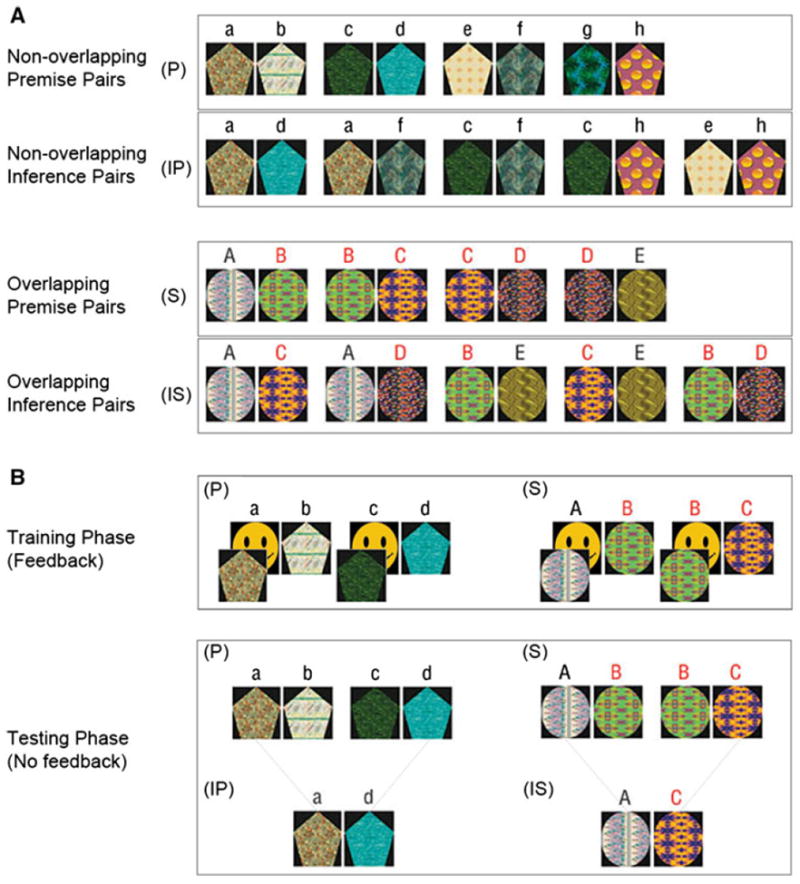Fig. 1.

Stimulus set and experimental conditions. a The TI paradigm was comprised of four stimulus conditions: non-overlapping premise pairs (P); non-overlapping inference pairs (IP); overlapping premise pairs (S); and overlapping inference pairs (IS). The reinforced item within each pair is shown on the left (e.g., a > b, c > d, etc.). b During the training phase, premise pairs from the non-overlapping stimulus set (P) were trained first, followed by training of premise pairs from the overlapping stimulus set. Participants were presented with a stimulus pair in the middle of the screen and instructed to select the item from the pair hiding the smiling face (no letters were shown in the experiment, and items within each pair were presented an equal number of times on the left and right side of the screen). Participants received feedback during the training phase—a correct guess during training caused the item to reveal a smiling face underneath, while an incorrect guess did not. During the testing phase, trained premise pairs from the non-overlapping (P) and overlapping (S) conditions were presented and participants were asked to indicate by button press which item was hiding the smiling face. During testing, participants were also asked to make novel judgments about items which had not previously been paired together during training [non-overlapping inference pairs (IP) and overlapping inference pairs (IS)]. Participants did not receive feedback during the testing phase
